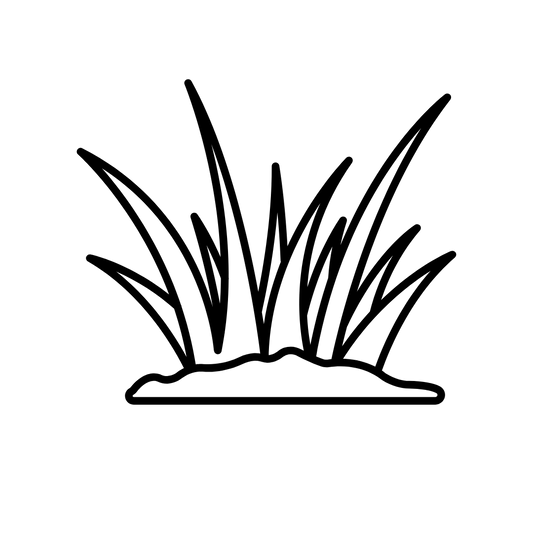California's fire-prone landscapes generate complex ash compositions containing heavy metals, volatile organic compounds, and polycyclic aromatic hydrocarbons that pose significant environmental and health risks. Understanding these contaminants is crucial for protecting soil health, water quality, and human safety in post-fire recovery efforts.
Wildfire ash contains hazardous substances including lead, mercury, arsenic, benzene, and benzo[a]pyrene that can contaminate soil and water systems for years after fires end.
Understanding Wildfire Ash: Composition and Risks in California
The Growing Wildfire Ash Challenge in California
California experiences increasingly severe wildfire seasons due to climate change, prolonged drought conditions, and expanding urban-wildland interface development. These fires produce diverse ash compositions that vary dramatically based on burned materials, ranging from natural vegetation to residential structures, commercial buildings, and industrial facilities.
The resulting ash contains complex mixtures of toxic contaminants that pose both immediate and long-term risks to environmental and human health. According to the U.S. Environmental Protection Agency, understanding ash composition is essential for developing appropriate cleanup strategies and protecting public health in fire-affected communities.
Recent megafires have burned through diverse landscapes containing everything from pristine wilderness to heavily developed urban areas, creating unprecedented contamination challenges that require comprehensive scientific understanding and evidence-based response strategies.
Types of Wildfire Ash and Their Contamination Sources
Wildfire ash composition depends entirely on the materials that burn during fire events, with each source contributing distinct contaminant profiles that significantly affect environmental impact and remediation approaches.
Vegetative Ash from Natural Landscapes
Vegetation-derived ash forms when trees, shrubs, grasses, and agricultural crops burn during wildfire events. Natural vegetation typically produces ash with elevated levels of potassium, calcium, and magnesium derived from plant tissue combustion processes.
According to the USDA Natural Resources Conservation Service, vegetative ash can significantly alter soil nutrient cycles and pH levels, potentially affecting long-term soil fertility and plant growth patterns in affected areas.
However, agricultural areas may contribute additional contamination through pesticide residues, herbicide compounds, and fertilizer materials that concentrate during the combustion process, creating more complex contamination profiles than ash from pristine natural vegetation.
Structural Ash from Buildings and Infrastructure
Structural ash results from residential, commercial, and industrial building combustion, creating the most concerning and dangerous contaminant profiles found in wildfire ash. This ash type contains the highest concentrations of toxic heavy metals and synthetic compounds.
The EPA identifies structural ash as containing heavy metals from lead-based paints, plumbing fixtures, electrical components, roofing materials, and various building products. Pre-1978 structures may release significant quantities of lead-based paint particles, while mercury contamination can originate from thermostats, fluorescent lighting systems, and electrical switches.
Copper plumbing systems and zinc galvanizing processes contribute additional heavy metal contamination, while synthetic building materials including plastics, insulation, and treated lumber release complex mixtures of organic compounds during combustion.
Industrial Ash from Commercial Facilities
Industrial facility fires produce ash containing highly specialized contaminants based on specific manufacturing processes, stored materials, and chemical inventories. These contamination sources can create the most severe environmental impacts due to concentrated toxic materials.
The California Department of Toxic Substances Control documents cases where industrial fires have released metals, petrochemicals, and synthetic compounds into surrounding environments, requiring extensive remediation efforts.
Petroleum storage facilities contribute benzene and other volatile organic compounds, while manufacturing sites may release process-specific contaminants including solvents, heavy metals, and specialty chemicals that pose unique environmental and health risks.
Mixed Ash Composition in Urban-Wildland Interface
Urban-wildland interface fires create the most complex mixed ash compositions containing both vegetative and structural components in varying proportions. These mixed compositions create unpredictable contaminant interactions and require comprehensive testing approaches for accurate risk assessment.
The combination of natural and synthetic materials creates synergistic effects where contaminants may interact in ways that increase toxicity or environmental persistence beyond what would be expected from individual components alone.
Heavy Metal Contaminants in Wildfire Ash
Heavy metals represent the most persistent and bioaccumulative contaminants found in wildfire ash, with potential for decades-long environmental contamination and serious health impacts through multiple exposure pathways.
Lead Contamination Sources and Health Risks
Lead contamination primarily originates from pre-1978 lead-based paints, electronic components, automotive batteries, and various industrial sources. Lead-based paint from older structures represents the most significant source in residential fire areas.
The Agency for Toxic Substances and Disease Registry establishes that lead exposure causes severe neurological damage, particularly in children, and can contaminate soil and groundwater systems for extended periods.
Lead persists in soil environments for decades and can be absorbed by plants grown in contaminated areas, creating potential food chain contamination pathways that affect both human and wildlife health. Even low-level chronic exposure can cause developmental delays and learning disabilities in children.
Mercury Release and Environmental Transport
Mercury contamination occurs when thermometers, fluorescent lighting systems, electrical switches, and various industrial equipment burn during fire events. Mercury presents unique challenges due to its ability to vaporize and travel long distances.
The U.S. Geological Survey documents that mercury vaporizes during combustion, travels atmospherically over considerable distances, and redeposits in distant locations, potentially affecting areas far from the original fire site.
Mercury bioaccumulates in aquatic food chains and poses particular risks to fish-consuming wildlife and humans. Even small amounts can cause neurological problems, kidney damage, and developmental issues in unborn children.
Arsenic Contamination and Cancer Risks
Arsenic enters wildfire ash through pressure-treated lumber, agricultural pesticides, and various industrial processes. Chromated copper arsenate (CCA) treated lumber, commonly used in construction before 2004, represents a major source of arsenic contamination in structural fires.
The Agency for Toxic Substances and Disease Registry classifies arsenic as a known human carcinogen that can contaminate groundwater supplies and persist in soil environments for extended periods. Chronic arsenic exposure is linked to skin, lung, and bladder cancers.
Arsenic contamination poses particular risks to food safety when contaminated soil is used for gardening or agriculture, as many crops can absorb and concentrate arsenic from soil into edible plant tissues.
Cadmium Sources and Biological Effects
Cadmium contamination results from battery combustion, plastic materials, electronic components, and various industrial sources. Nickel-cadmium batteries and electronic devices represent significant sources in residential and commercial fires.
The EPA reports that cadmium disrupts aquatic ecosystems and bioaccumulates in plant and animal tissues, creating long-term environmental contamination issues. Cadmium exposure can cause kidney damage, bone disease, and potentially lung cancer in humans.
Cadmium is particularly concerning because it can be absorbed by food crops and accumulate in edible plant parts, making contaminated soil unsuitable for food production without extensive remediation.
Volatile Organic Compounds in Wildfire Ash
Volatile organic compounds represent immediate health risks due to their mobility, ability to contaminate indoor air, and acute toxicity effects that can affect exposed individuals within hours or days of exposure.
Petroleum-Derived VOCs and Cancer Risks
Petroleum product combustion releases benzene, toluene, ethylbenzene, and xylenes (BTEX compounds) into ash deposits and surrounding air. These compounds originate from vehicles, fuel storage, and petroleum-based products burned during fires.
The EPA classifies benzene as a known human carcinogen directly linked to leukemia and other blood disorders. Benzene exposure can occur through inhalation, skin contact, or ingestion of contaminated water.
These compounds can volatilize from ash deposits and contaminate indoor air quality in nearby structures, creating ongoing exposure risks even after visible ash removal. Proper ventilation and air filtration become critical in affected areas.
Synthetic Material VOCs from Modern Products
Plastic, synthetic fabric, foam insulation, and modern building material combustion produces formaldehyde, styrene, and numerous other volatile compounds with varying toxicity levels.
The National Institute for Occupational Safety and Health identifies these compounds as respiratory irritants and potential carcinogens that can cause immediate health effects including throat irritation, headaches, and breathing difficulties.
Formaldehyde exposure can cause severe throat irritation and has been linked to nasopharyngeal cancer, while styrene exposure may cause neurological effects and is classified as a possible human carcinogen.
Natural VOCs from Vegetation Combustion
Vegetation combustion produces terpenes, phenols, and other natural volatile compounds that, while generally less toxic than synthetic VOCs, can still cause respiratory irritation and contribute to air quality degradation in affected areas.
The USDA Forest Service notes that high concentrations of natural VOCs can cause respiratory symptoms, particularly in sensitive individuals with asthma or other pre-existing respiratory conditions.
Polycyclic Aromatic Hydrocarbons (PAHs)
Polycyclic aromatic hydrocarbons form during incomplete combustion processes and represent significant long-term carcinogenic risks in wildfire ash due to their persistence and bioaccumulation potential.
Benzo[a]pyrene and Cancer Risk
Benzo[a]pyrene, classified as a probable human carcinogen by the EPA, forms during both vegetative and structural combustion processes. This compound represents one of the most toxic PAHs commonly found in wildfire ash.
Benzo[a]pyrene persists in soil environments for extended periods and can be absorbed by plants, creating potential food chain contamination pathways that affect both human and wildlife health through dietary exposure.
The compound is particularly concerning because it can penetrate skin and is readily absorbed through multiple exposure routes including inhalation, ingestion, and dermal contact.
Other Significant PAH Compounds
Anthracene, fluoranthene, pyrene, and chrysene represent additional PAH compounds commonly found in wildfire ash with varying degrees of toxicity and environmental persistence.
The U.S. Geological Survey documents these compounds in post-fire soil samples throughout California and notes their potential for groundwater contamination through leaching processes that can affect drinking water supplies.
Many PAHs exhibit mutagenic and carcinogenic properties, and their persistence in soil environments means they can continue posing health risks for decades after initial contamination events.
Naphthalene and Environmental Distribution
Naphthalene originates from petroleum products, plastics, coal tar products, and various synthetic materials during combustion. The EPA identifies naphthalene as a possible human carcinogen that can spread widely through atmospheric transport.
Naphthalene is more volatile than other PAHs, allowing it to travel greater distances and contaminate areas beyond the immediate fire zone through air transport and subsequent deposition.
Physical Properties and Environmental Behavior
Understanding ash particle characteristics and environmental transport mechanisms is crucial for predicting contamination patterns and developing effective protection and remediation strategies.
Particle Size Distribution and Transport
Coarse ash particles, typically from vegetation combustion, settle quickly near fire sources and primarily impact local soil and water systems through direct deposition and surface water runoff.
Fine ash particles, often containing the highest concentrations of metals from structural fires, can travel extensive distances through atmospheric transport and pose significant inhalation risks. The EPA notes that particles smaller than 2.5 micrometers can penetrate deep into lung tissue and cause serious respiratory health effects.
Ultrafine particles may remain suspended in air for extended periods and can be transported hundreds of miles from fire sources, creating regional contamination issues that affect areas far from original fire locations.
Mobility and Environmental Transport Pathways
The USDA Natural Resources Conservation Service documents that ash mobility depends on particle size characteristics, local topography, precipitation patterns, and wind conditions that vary significantly across California's diverse landscapes.
Fine particles can be repeatedly resuspended by wind action, creating ongoing exposure risks for extended periods, while coarse particles may be mobilized by surface water runoff during rain events, potentially contaminating downstream water bodies.
Seasonal weather patterns significantly affect contamination distribution, with dry periods increasing airborne transport and wet periods increasing water-based transport of contaminants.
Environmental Persistence and Degradation
Heavy metals and PAHs persist in soil environments for decades with minimal natural degradation, while VOCs may volatilize or undergo microbial degradation more rapidly depending on specific compounds and environmental conditions.
The U.S. Geological Survey reports that some contaminants can leach into groundwater systems over time, creating long-term contamination concerns that may affect drinking water supplies and aquatic ecosystems for years or decades.
Environmental and Health Impact Assessment
Wildfire ash contamination affects multiple environmental systems and creates diverse exposure pathways that pose risks to both human health and ecological systems throughout affected regions.
Soil Contamination and Agricultural Impacts
The USDA Natural Resources Conservation Service documents that ash deposition can dramatically alter soil chemistry, raising pH levels and introducing toxic metals that reduce beneficial microbial activity and negatively impact plant growth and crop production.
Heavy metals can persist in agricultural soils for decades, affecting long-term agricultural productivity and potentially contaminating food crops grown in affected areas. Soil testing becomes essential before resuming agricultural activities.
Contaminated soil may require extensive remediation including soil removal, amendment with clean organic matter, or long-term management strategies that prevent contaminant uptake by crops.
Water Quality and Aquatic Ecosystem Effects
The U.S. Geological Survey reports that ash runoff carries concentrated metals and PAHs into surface water systems, potentially contaminating drinking water supplies and causing significant harm to aquatic ecosystems.
Stormwater runoff from fire-affected areas can transport highly concentrated contaminants into rivers, lakes, reservoirs, and coastal waters, affecting water treatment systems and aquatic life throughout downstream watersheds.
Contaminated sediments may continue releasing pollutants for years, creating long-term water quality issues that require ongoing monitoring and potential remediation efforts.
Air Quality and Respiratory Health Concerns
The Centers for Disease Control and Prevention identifies windborne ash particles as significant respiratory hazards, particularly for sensitive individuals with asthma, COPD, or other pre-existing respiratory conditions.
Fine particles can remain suspended in air for extended periods, creating ongoing exposure risks that may persist for weeks or months after initial ash deposition, particularly in areas with frequent wind activity.
Indoor air quality can be significantly affected when fine ash particles infiltrate buildings, requiring specialized air filtration and ventilation strategies to protect occupant health.
Comprehensive Soil Testing Protocols
Systematic soil testing provides essential information for identifying contamination levels and developing appropriate protection and remediation strategies in post-fire environments.
Safe Sample Collection Procedures
Use appropriate personal protective equipment including gloves, respiratory protection, and eye protection during sample collection activities. Clean stainless steel tools prevent cross-contamination between sampling locations.
Collect 10-15 representative soil samples at root zone depth (6-8 inches) from different areas across your property, avoiding areas with visible ash accumulation to obtain samples representative of actual soil conditions rather than surface ash deposits.
Sample collection should occur during calm weather conditions to minimize airborne particle exposure and ensure accurate representation of soil contamination rather than recent ash deposition.
Sample Preparation and Handling
Air-dry samples at room temperature for 24-48 hours, avoiding oven-drying which can alter metal concentrations and organic compound levels. Remove large debris and stones while maintaining soil texture characteristics.
Mix samples thoroughly in a clean plastic bucket to create a representative composite sample, then place approximately one cup of prepared sample in a labeled, sealable plastic bag with detailed location and collection information.
Proper sample preservation and chain-of-custody procedures ensure reliable laboratory results that can be used for regulatory compliance and risk assessment purposes.
Laboratory Analysis Requirements
EPA-certified laboratories should analyze samples for priority pollutants including heavy metals (lead, mercury, arsenic, cadmium, chromium), PAHs (benzo[a]pyrene, anthracene, fluoranthene, pyrene), and basic soil properties including pH levels.
Specialized analysis may be required based on specific fire sources, with industrial fires requiring expanded testing for process-specific contaminants and residential fires focusing on building material-derived compounds.
Laboratory reporting should include comparison to established health-based screening levels and regulatory standards to enable appropriate risk assessment and decision-making.
Mitigation and Remediation Strategies
Effective contamination management requires immediate protective measures followed by long-term remediation approaches based on site-specific contamination levels and exposure risk assessment.
Immediate Protection and Safety Measures
The Centers for Disease Control and Prevention recommends minimizing ash disturbance through careful movement and cleanup procedures, using HEPA-filtered respiratory protection when cleanup activities are necessary, and dampening ash with water to reduce airborne particle generation.
Keep windows and doors closed in affected areas, use air purifiers equipped with HEPA filtration systems, and avoid activities that could resuspend contaminated particles such as sweeping or using leaf blowers on ash-covered surfaces.
Children and pregnant women should avoid exposure to wildfire ash areas until professional assessment and cleanup can be completed, as these populations face higher risks from toxic exposure.
Long-term Remediation Approaches
Remediation strategies depend on specific contamination levels and may include soil removal and replacement for heavily contaminated areas, amendment with clean organic matter to dilute and stabilize contaminants, or phytoremediation using specially selected plants that can absorb or stabilize contaminants.
The USDA Natural Resources Conservation Service provides technical assistance for developing site-specific remediation plans that consider local soil conditions, contamination levels, intended land use, and available resources for implementation.
Professional environmental contractors may be necessary for severely contaminated sites, particularly those with high levels of heavy metals or extensive structural ash contamination that pose significant health risks.
Ongoing Monitoring and Maintenance
Regular soil testing is essential for monitoring contamination levels over time and evaluating the effectiveness of remediation efforts. The EPA recommends annual testing for the first three years following major contamination events.
Long-term monitoring should continue based on initial risk assessment results, with more frequent testing for high-risk sites and less frequent monitoring for areas with lower contamination levels or successful remediation outcomes.
Vegetation establishment and maintenance can help stabilize contaminated soil and prevent erosion that could spread contamination to surrounding areas or water bodies.
Regulatory Framework and Compliance
Understanding applicable environmental regulations and health standards helps property owners navigate post-fire contamination issues and ensure appropriate protection measures are implemented.
Federal and state agencies including the EPA, California Department of Toxic Substances Control, and local health departments provide guidance on acceptable contamination levels, cleanup requirements, and ongoing monitoring obligations.
Property owners may face liability issues related to contamination, particularly if contaminated soil or runoff affects neighboring properties or water resources, making proper assessment and remediation critical for legal protection.
Future Preparedness and Prevention
Proactive planning can help minimize contamination risks and improve post-fire response effectiveness when wildfires occur in the future. Understanding local fire risks and potential contamination sources enables better preparedness.
Property modifications such as defensible space creation, fire-resistant landscaping, and removal of contamination sources can reduce both fire risk and potential ash contamination in the event of wildfire.
Emergency planning should include soil testing protocols, remediation resources, and alternative land use strategies that can be implemented quickly following fire events to protect human health and environmental quality.
Conclusion
Wildfire ash contamination represents a significant and growing environmental and health challenge that requires comprehensive scientific understanding, systematic testing, and evidence-based mitigation approaches. The complex mixture of heavy metals, volatile organic compounds, and polycyclic aromatic hydrocarbons found in California's wildfire ash demands proactive soil assessment and professional remediation strategies.
Property owners, agricultural producers, and community planners must prioritize professional soil testing through EPA-certified laboratories to accurately identify contamination levels and develop appropriate protection measures. Understanding the long-term persistence of heavy metals and PAHs in soil environments emphasizes the importance of prompt, effective response to prevent decades of environmental and health impacts.
Success in managing wildfire ash contamination requires combining immediate protective measures with long-term remediation strategies, ongoing monitoring programs, and proactive planning for future fire events. Through comprehensive assessment, appropriate remediation, and continued vigilance, affected communities can protect both environmental and human health while recovering from wildfire impacts.
Sources
- U.S. Environmental Protection Agency. Wildfire Ash Cleanup Guidelines. https://www.epa.gov/emergency-response/wildfire-ash-cleanup
- USDA Natural Resources Conservation Service. Soil Health After Wildfire Events. https://www.nrcs.usda.gov/resources/guides-and-instructions/soil-health
- U.S. Geological Survey. Wildfire Effects on Water Quality. https://www.usgs.gov/mission-areas/water-resources/science/wildfire-effects-water-quality
- Centers for Disease Control and Prevention. Wildfire Smoke and Health Effects. https://www.cdc.gov/disasters/wildfires/duringfire.html
- Agency for Toxic Substances and Disease Registry. Heavy Metal Toxicity Profiles. https://www.atsdr.cdc.gov/substances/toxsubstance.asp
- USDA Forest Service. Post-Fire Soil Treatment Research. https://www.fs.usda.gov/research/treesearch/58929
- California Department of Toxic Substances Control. Wildfire Response Program. https://dtsc.ca.gov/wildfire-response/
- National Institute for Occupational Safety and Health. Chemical Hazards Guidelines. https://www.cdc.gov/niosh/docs/81-123/
- Stanford University. Metal Toxin Threat in Wildland Fires. Nature Communications. https://www.nature.com/articles/s41467-023-43101-9
- Doerr, S.H. et al. (2025). Pollution and toxicity of heavy metals in wildfires-affected soil and surface water: A review and meta-analysis. Science of The Total Environment. https://www.sciencedirect.com/science/article/abs/pii/S0269749125002180
- PMC Research Article. Metals in Wildfire Suppressants. https://pmc.ncbi.nlm.nih.gov/articles/PMC11562715/
- PMC Research Article. Potentially Toxic Substances in Wildfire-Affected Soils. https://www.ncbi.nlm.nih.gov/pmc/articles/PMC8778774/
- National Academies Press. Human Exposures and Health Impacts from Wildland-Urban Interface Fires. https://www.ncbi.nlm.nih.gov/books/NBK588649/
- PMC Research Article. Benzo[a]pyrene Environmental Occurrence and Toxicity Mechanisms. https://pmc.ncbi.nlm.nih.gov/articles/PMC9181839/
- Canadian Science Publishing. Polycyclic aromatic hydrocarbons in terrestrial and aquatic environments following wildfire. https://cdnsciencepub.com/doi/10.1139/er-2022-0055
- ACS Earth and Space Chemistry. Wildfire Burn Intensity Effects on PAH Quantity and Speciation in Soils. https://pubs.acs.org/doi/10.1021/acsearthspacechem.8b00101












